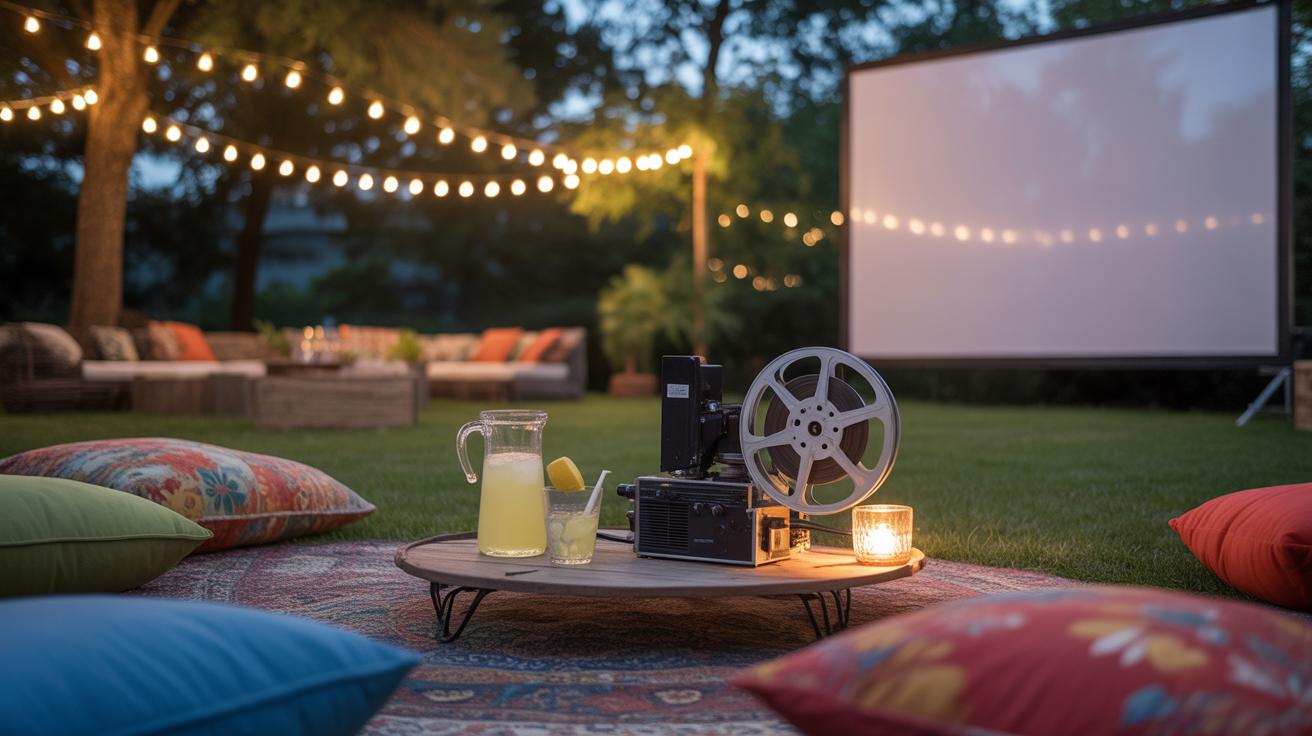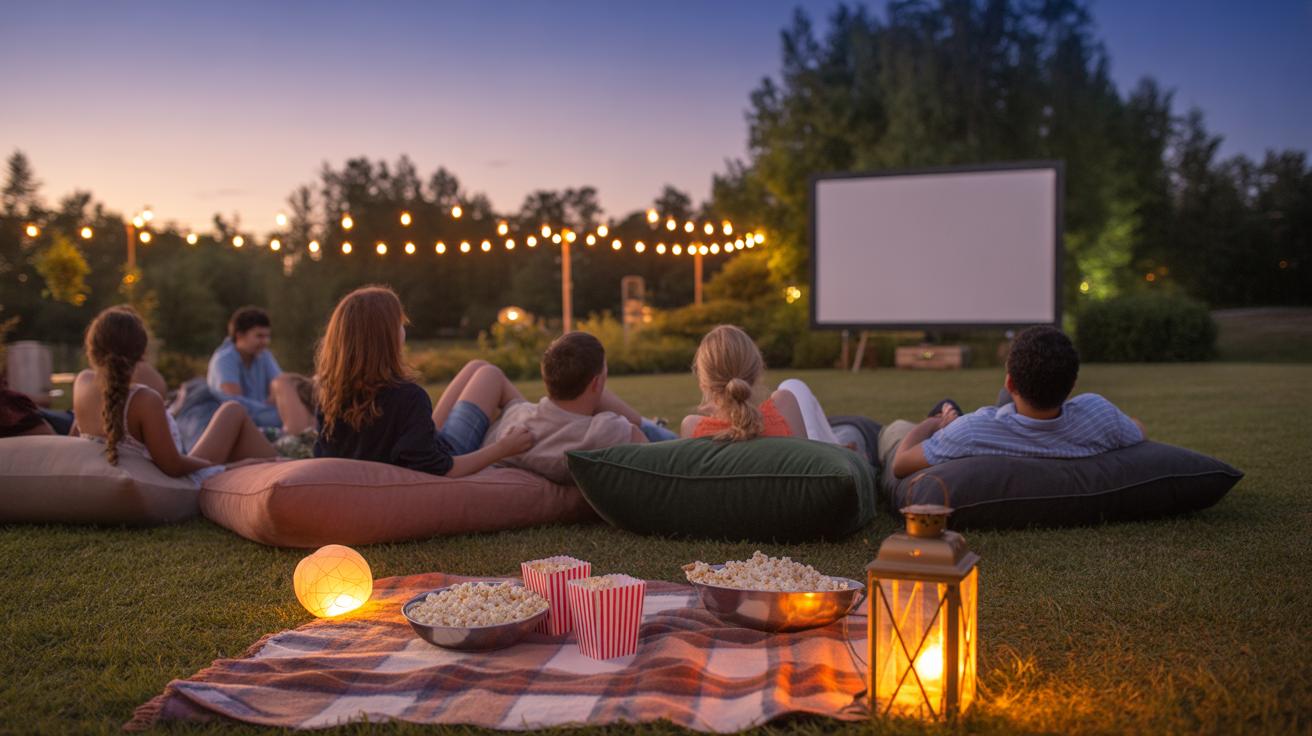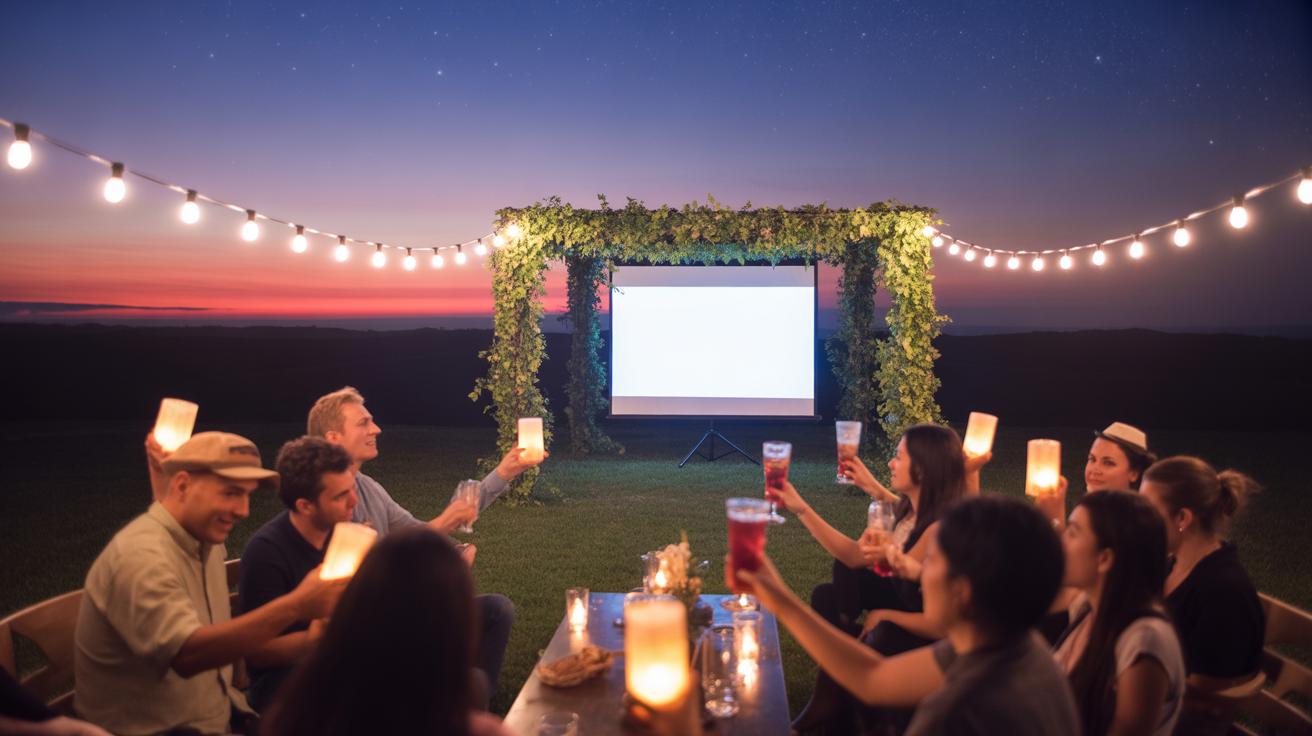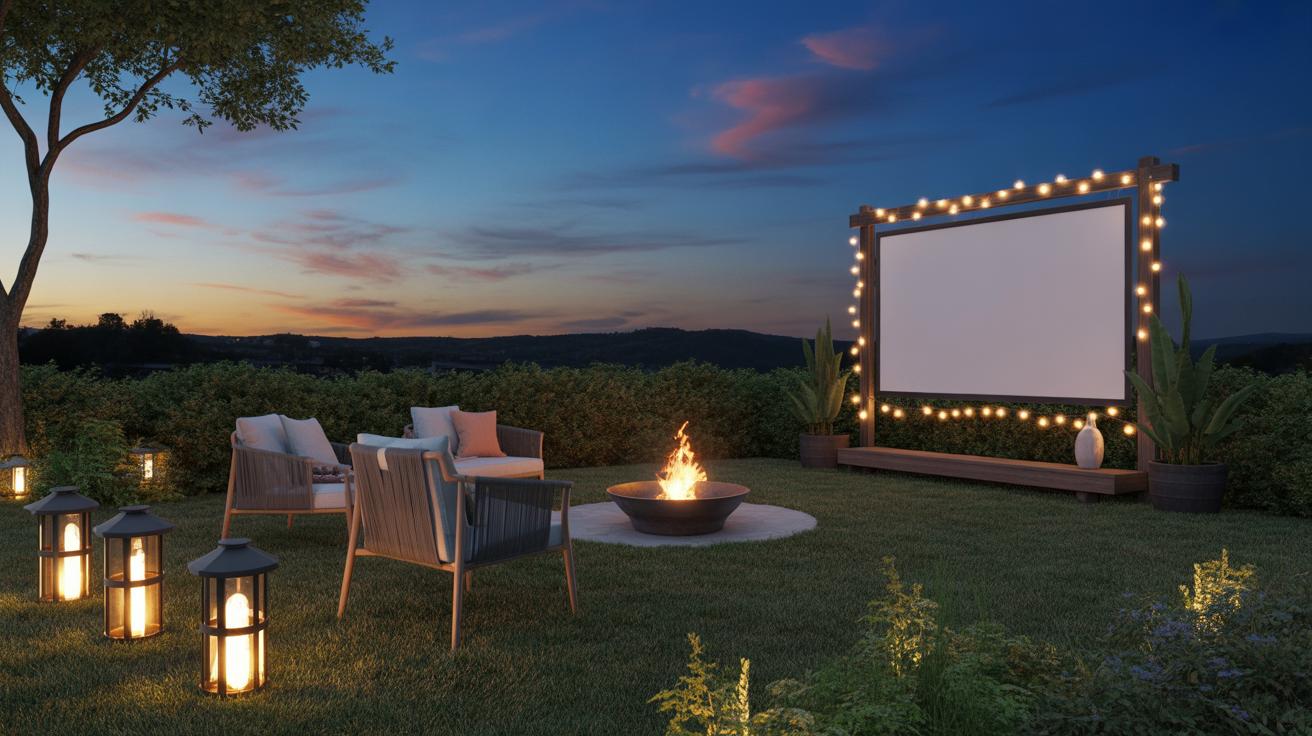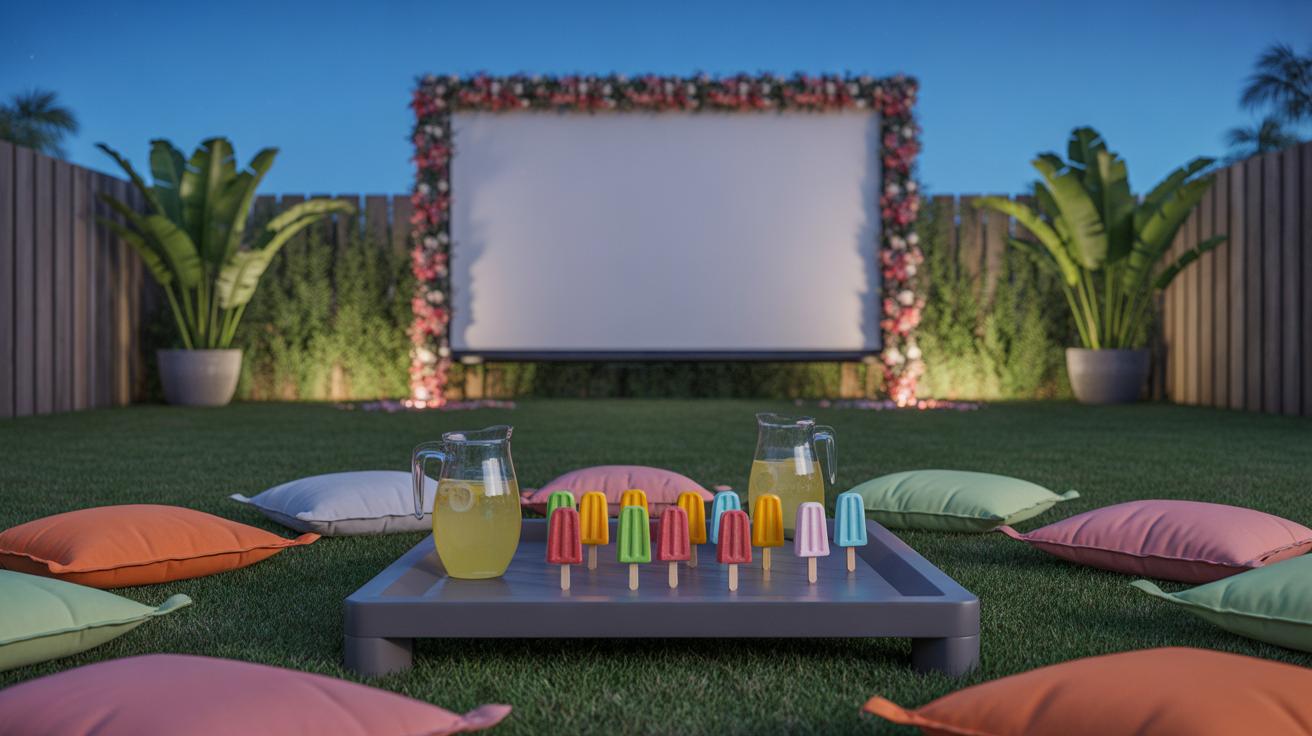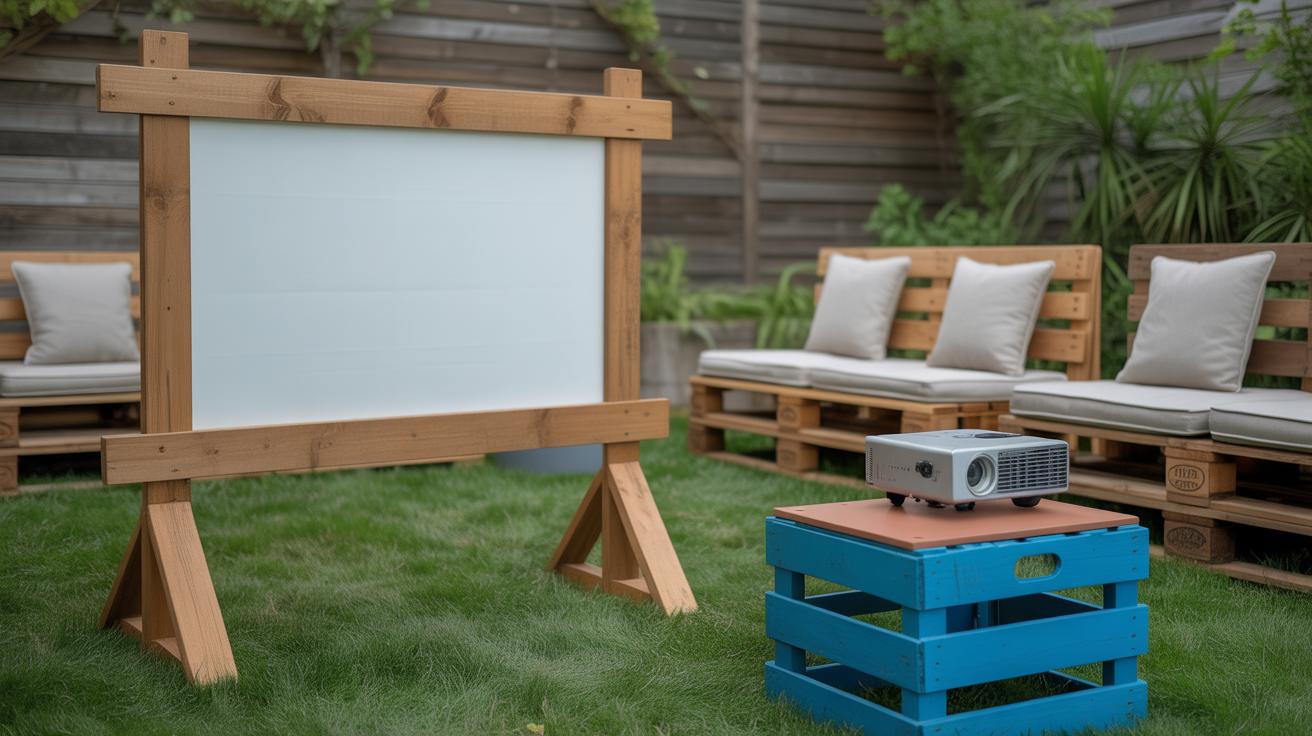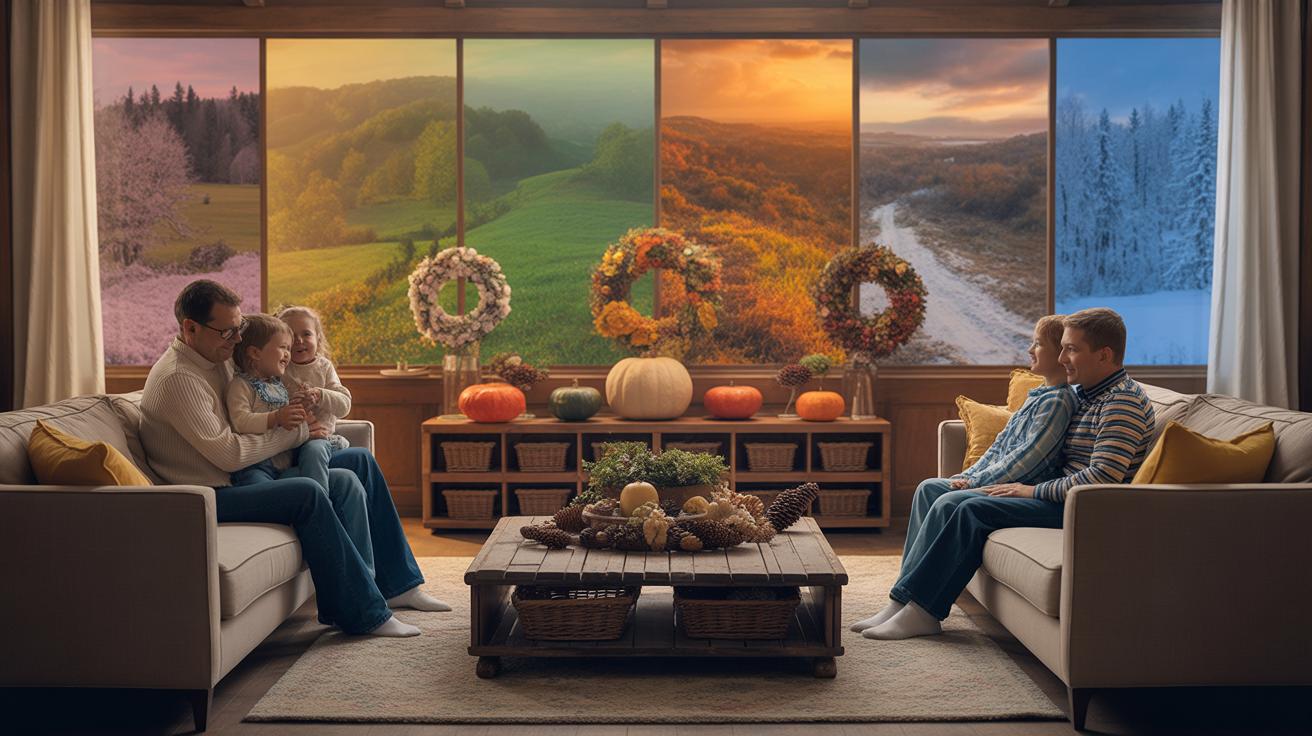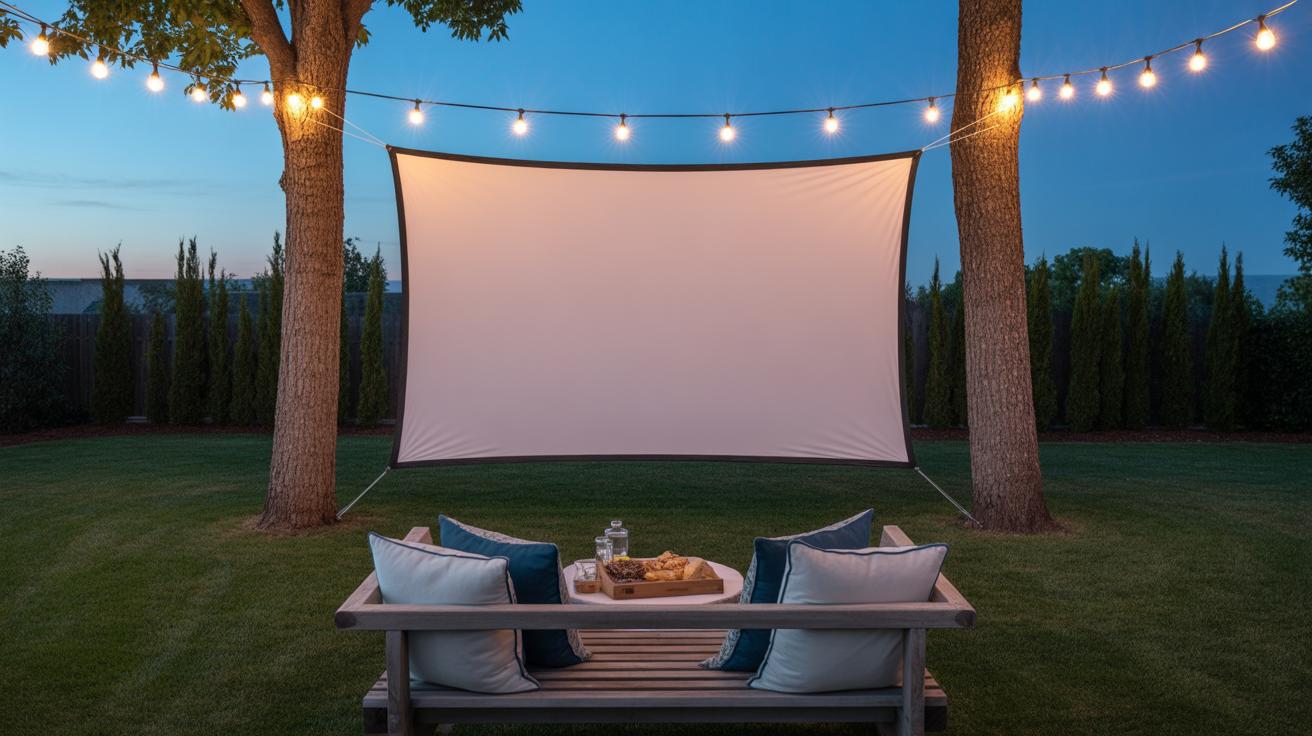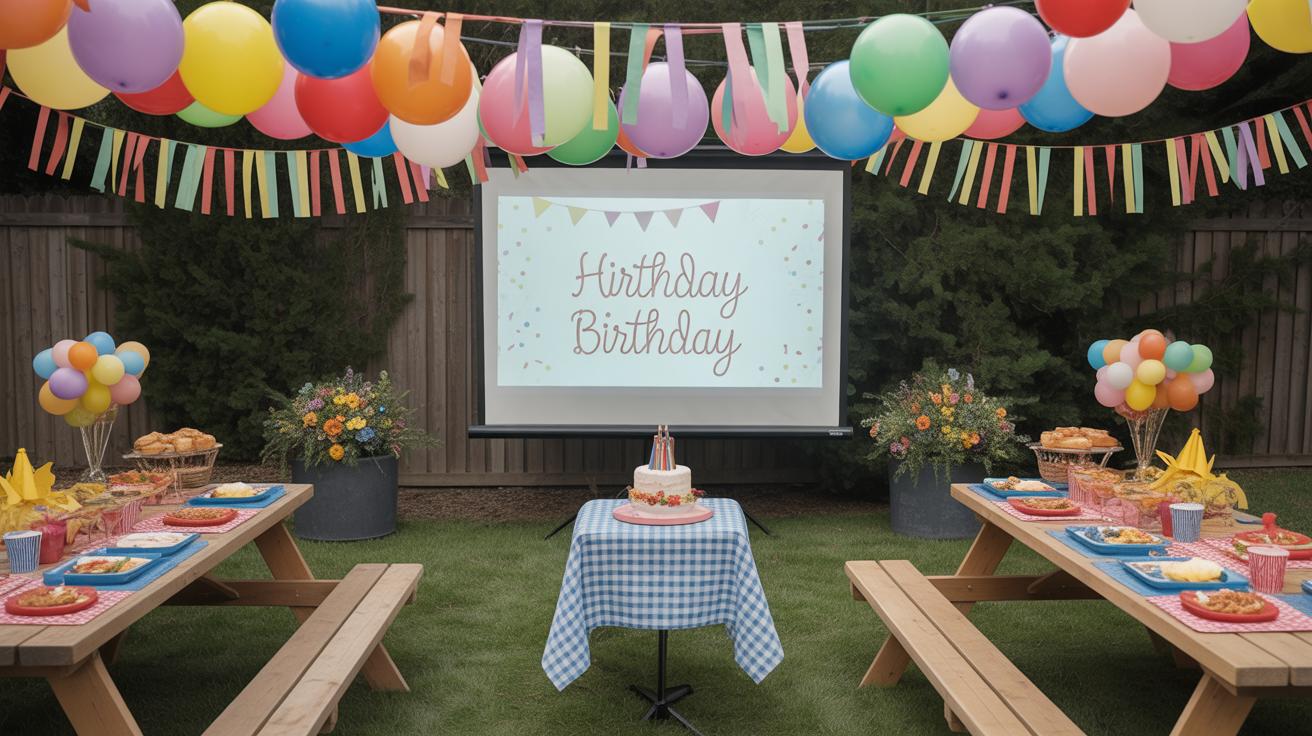Introduction
Outdoor movie nights offer a fresh way to enjoy films under the open sky. This experience combines the charm of cinema with the beauty of nature. It is perfect for family gatherings, parties, or a unique date night.
This article explores how to plan and host an outdoor movie night. You will learn about selecting the right equipment, setting the mood, and ensuring your guests have a great time. Whether you have a big backyard or a small patio, these ideas will help you create fun and memorable al fresco film fun.
Choosing the Best Location for Your Outdoor Movie Night
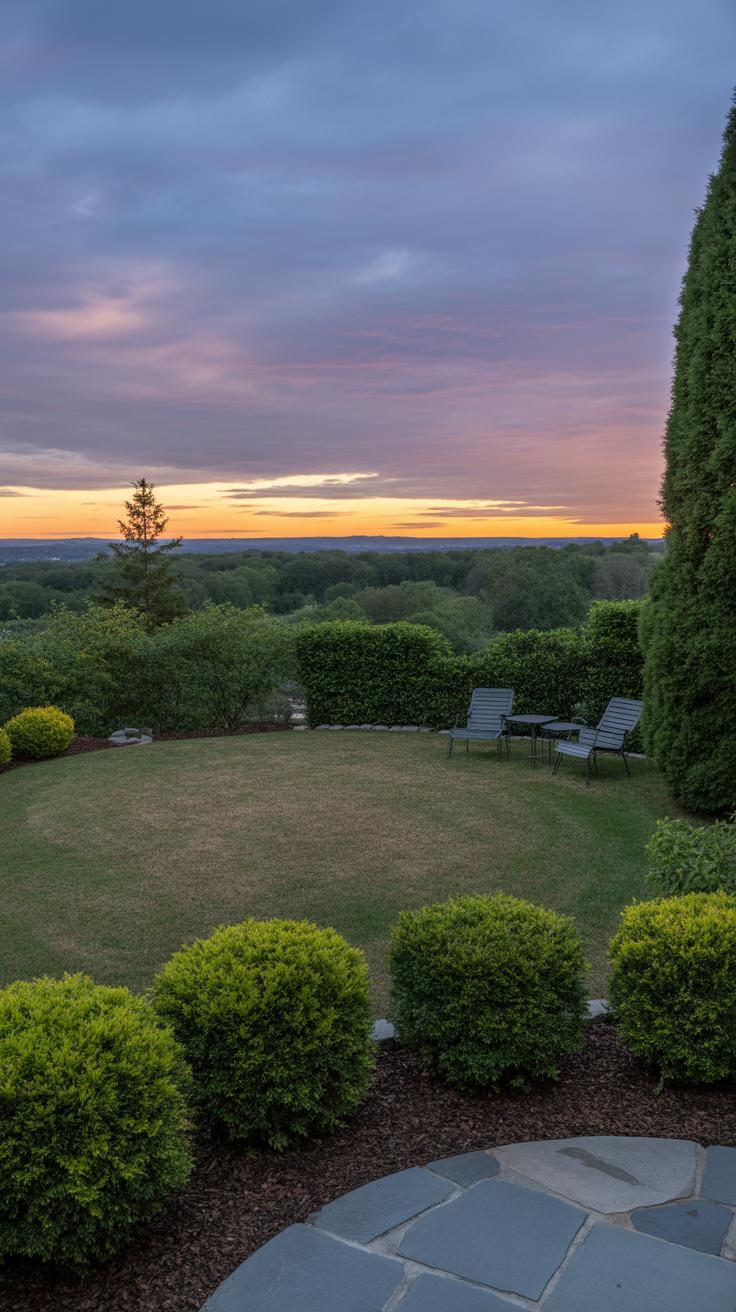
Picking the right spot in your yard or outdoor space makes a huge difference. You want enough room so everyone can settle in comfortably without feeling cramped. Think about how many guests you plan to invite and arrange seating or blankets with enough space between them—about two to three feet usually works well—to avoid blocking anyone’s view.
Consider the viewing angle, too. You don’t want people twisting their necks to watch the screen. Ideally, the screen should be visible to everyone without obstructions like trees or garden furniture. Sometimes shifting your screen just a few feet can open up a much better sightline.
Noise can easily ruin the mood. Try to choose a location away from street traffic or noisy neighbors. If your backyard is near a busy road, setting up further inside your yard or behind a natural sound barrier, like bushes or fences, helps. You might think background sounds fade away, but during quiet moments in the movie, even distant noise sticks out.
Safety is often overlooked but crucial. Keep cords tucked away to prevent tripping hazards, especially where people walk or cross. Clear paths to the seating area and the screen so guests don’t have to navigate obstacles in the dark. You don’t want people fumbling around or accidentally stepping on cables—it disrupts everyone’s experience.
One time, I set up near a garden pond—I thought it was cozy, but wading near cords wasn’t a great idea, so I moved the setup. It’s a good reminder to scan for any possible risks before guests arrive. Would your chosen spot still feel safe and welcoming after sunset?
Selecting the Right Equipment for Your Outdoor Cinema
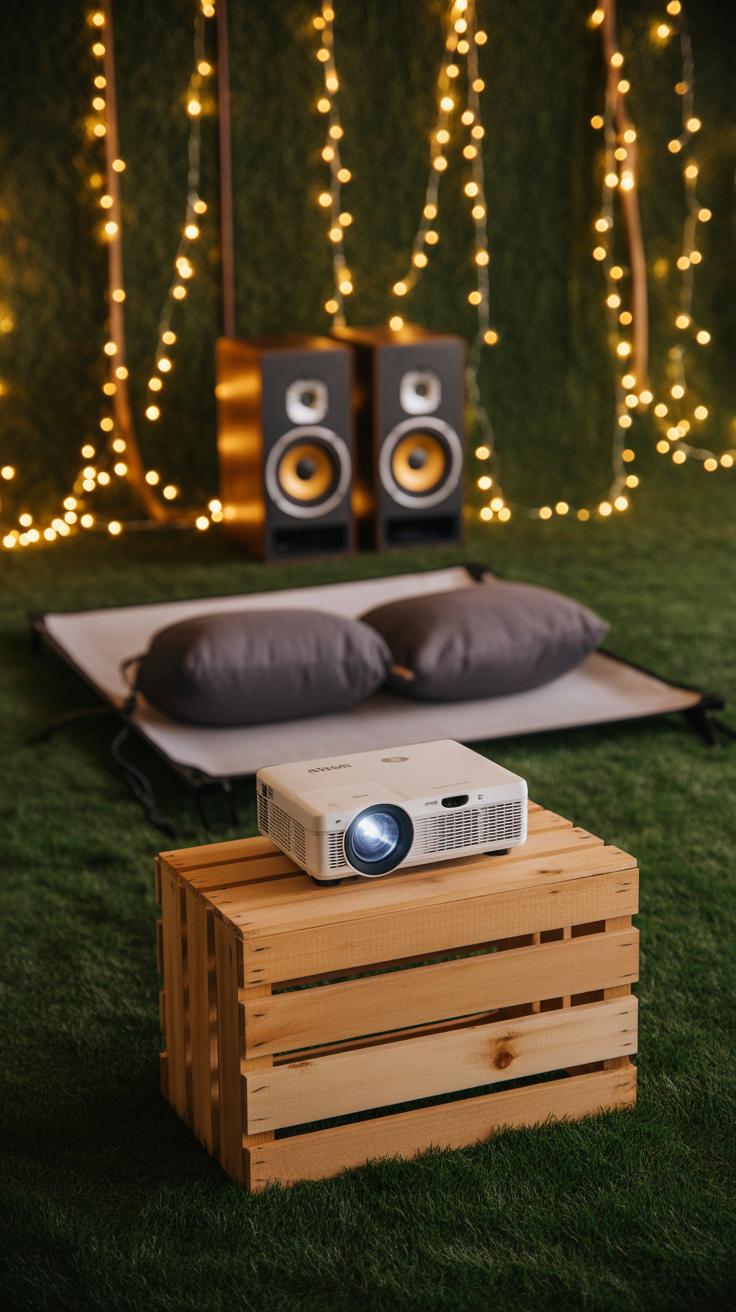
Getting the gear right can make or break your outdoor movie night. You don’t need a cinema-grade setup, but some thought goes a long way. When it comes to projectors, bright is better—think at least 2,000 lumens if you want a decent picture after sunset. Portable projectors with LED lamps tend to last longer and handle outdoor temps better. Some folks swear by mini projectors because they’re easy to carry, but don’t expect crystal-clear images if your space is large or ambient light sticks around.
For screens, the options range from buying an inflatable screen designed for outdoor use to just hanging a plain white sheet. The sheet trick is old-school but works surprisingly well if you find a taut wall or frame to keep it wrinkle-free. Inflatable screens, on the other hand, offer a professional look and save you from constantly rehanging fabric, although they can be pricey.
Audio matters more than most expect. Laptop or projector speakers just won’t cut it outdoors. Ideally, you want portable Bluetooth speakers or a small sound system placed close to the audience. Wireless sets reduce cable clutter, but wired ones can offer clearer sound if you manage the setup carefully. A simple rule—make sure the sound covers the whole viewing area without blowing ears out.
Power supply often trips people up. Not every backyard has accessible outdoor plugs, so think about extension cords rated for outdoor use and maybe a portable generator if you’re far from the house. Solar-powered setups exist but tend to be underpowered for most movie nights. A good tip: test your setup during the day to avoid scrambling when darkness falls.
Creating a Cozy Atmosphere with Lighting and Seating
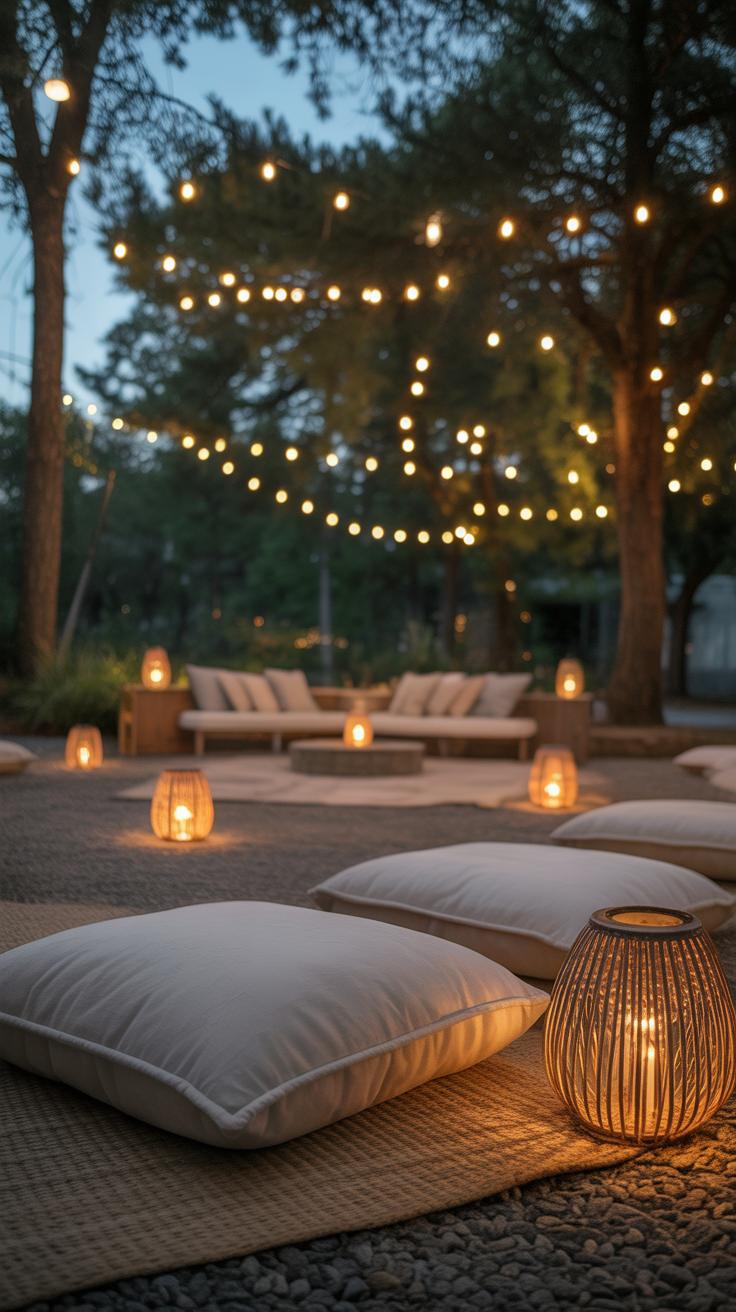
Lighting and seating can really make or break your outdoor movie night. Think about it—harsh lights or uncomfortable spots throw off the whole vibe. You want a setting that’s relaxed but still well-lit enough so people don’t trip on extension cords or, well, their own feet.
Lighting Ideas for Comfort and Safety
Soft lighting sets a gentle mood without distracting from the screen. String lights hung above or wrapped around trees create that warm, inviting glow. Lanterns, especially battery-operated or solar ones, add pockets of light along pathways or near snack tables. Speaking of solar lights, they’re pretty practical; you don’t have to worry about cords or outlets. Just place them early in the day so they absorb sunlight. The aim is to keep the area navigable without flooding the space in brightness—it’s a delicate balance you might tweak throughout the evening.
Seating Options for Guests
How guests sit affects their comfort and enjoyment. Blankets spread on the grass feel intimate and casual, perfect if your crowd doesn’t mind sitting close together. Lawn chairs work well for those who want back support—easy to move and stack after, too. If you want to up the comfort a bit, bean bags or inflatable loungers can feel luxurious without needing a lot of effort. Mixing seating types lets guests choose their own comfort level. I remember one night where some friends opted for pillows on the deck, while others hunkered down in folding chairs—a mix like that keeps things flexible.
Choosing the Perfect Movie for Your Audience
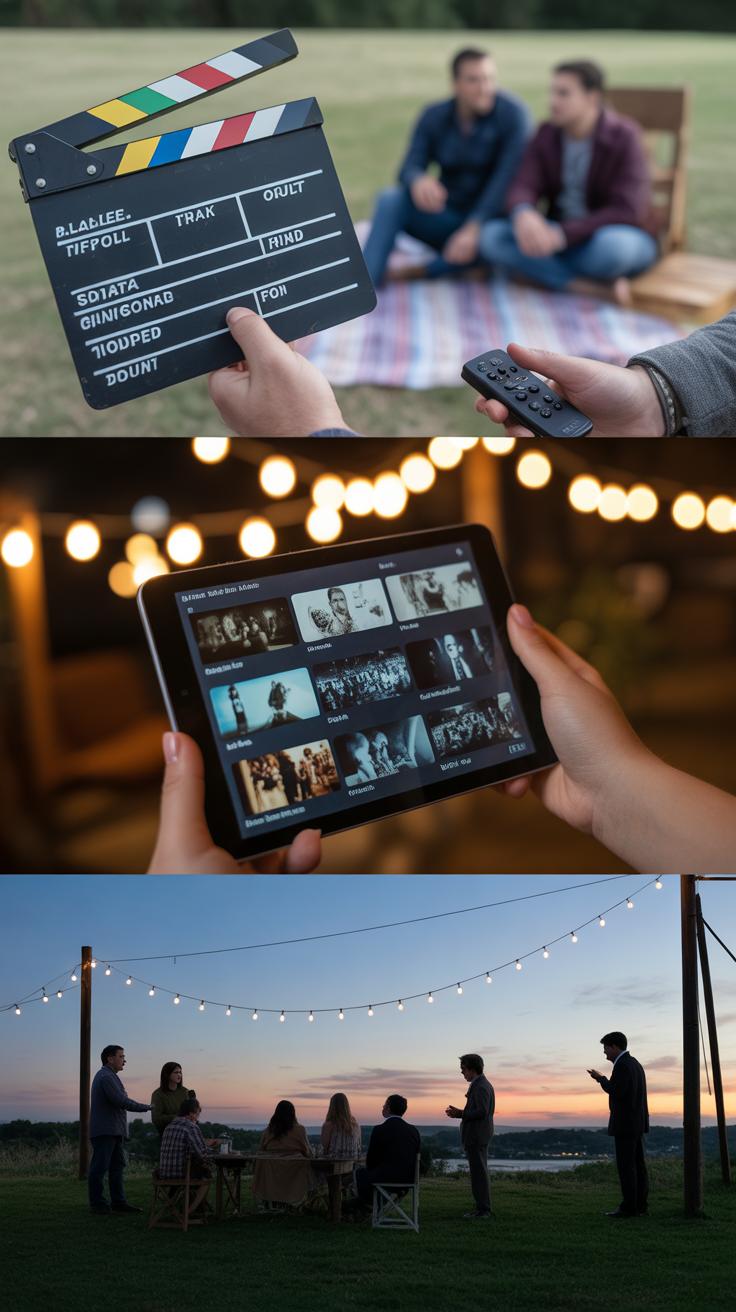
Picking the right movie for an outdoor screening isn’t always straightforward. First, think about who’s coming. Are kids tagging along? Mostly adults? A mix? Age matters—a light-hearted animated film might thrill the little ones but bore teenagers or adults after a while. On the flip side, something too intense or complex may not land well for younger viewers. Sometimes, you just want something easy to follow, something that doesn’t demand undivided attention because the outdoor setting naturally divides focus.
Genres play a role too. Comedies and family-friendly adventures often work well in an open-air setting—people tend to laugh more and react freely outside. Horror movies? They’re tricky. The scares might lose impact outdoors, or maybe the ambient noise will kill the mood. But for some, a creepy tale under the stars is exactly the point.
Weather also nudges your choice. A breezy spring evening might feel fresh but could distract if the plot’s slow. Rainy or colder nights? Probably better suited for shorter, lighter films, since no one wants to linger in discomfort. Timing matters here as well. Starting right after sunset usually hits the sweet spot—enough darkness for good screen visibility, but not so late that folks drift off. Ever tried watching a film at twilight, only to lose some details because it’s still too bright? It’s a frequent challenge.
Family-Friendly and Group Movie Ideas
Choosing a flick everybody can enjoy might feel like walking a tightrope. Some titles tend to work well across ages and tastes:
- Animated classics like “Toy Story” or “Finding Nemo” usually charm both kids and adults.
- Lighthearted adventures such as “The Princess Bride” or “Paddington” offer humor and heart without overcomplicating things.
- Feel-good comedies, for example “Elf” or “The Secret Life of Pets,” help keep the mood upbeat.
These films have broad appeal—they’re easy to watch, contain minimal violence, and often spark conversations afterward. Plus, they avoid heavy themes that might feel out of place in a relaxed, outdoor setting. But maybe you’re okay with mixing it up? Sometimes slipping in a nostalgic or cult favorite sparks lively reactions, though it risks alienating some.
Considering Weather and Timing
Weather can steer your movie pick more than you might expect. Wind can carry sound away, so movies heavy on quiet dialogue might lose the audience’s attention. On cooler nights, movies with cozy, warm scenes can make viewers feel comfortable. Conversely, hot, sticky evenings might call for something fast-paced or light to keep energy up.
Timing matters too—starting just after sunset means better screen visibility without being too late for younger guests. If your event runs longer, consider a double feature with a short break to let people stretch or grab snacks. Sometimes, beginning earlier in summer evenings works because daylight lingers. It’s a balancing act between natural light fading and guests’ patience waning.
In the end, your movie choice sets the tone. Whether you pick something to spark laughter, inspire awe, or just keep things simple, it’s worth thinking through these details. Even if things don’t go perfectly, the shared experience under the open sky often makes it memorable anyway.
Preparing Snacks and Drinks for Your Movie Night
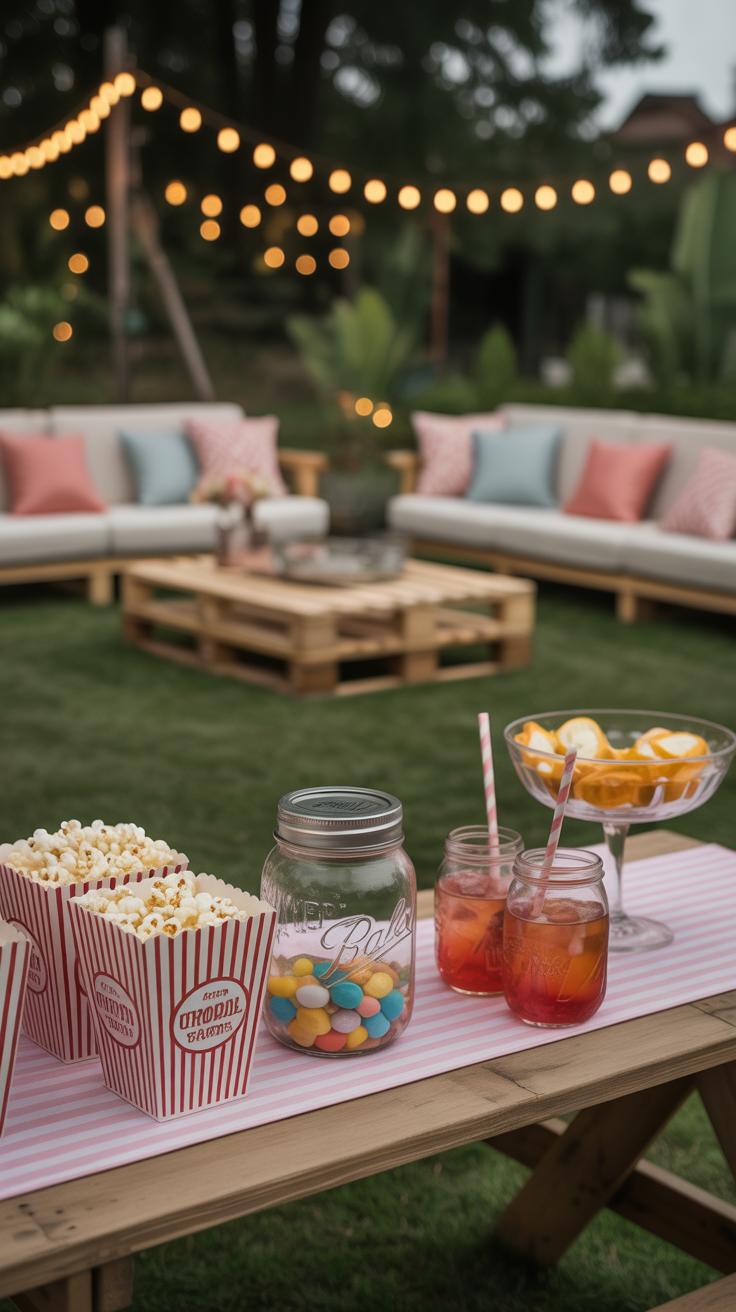
Classic and Simple Snack Choices
Popcorn is a go-to for any movie night, especially outdoors—it’s easy to make, share, and keeps well even if it cools down. You might want to offer a few flavor options, like a little butter, cheese, or caramel, just to mix things up. Candy, like gummies or chocolate pieces, works well too, though you may want to keep it in sealed bags to avoid sticky fingers attracting bugs.
Finger foods can be a smart pick as well. Think mini sandwiches, pretzel sticks, or even some cheese and crackers. These are easy to eat while watching and won’t cause much mess. Sometimes, a simple plate of cut veggies alongside a dip adds freshness—especially if you want to balance out the usual indulgent snacks. You don’t have to be fancy here; practicality is key.
Drink Ideas and Serving Tips
Water is an obvious must, and plenty of it. Bring coolers or dispensers with ice to keep it refreshing. Juice boxes or small bottles of fruit juice offer variety, and they’re pretty spill-proof, which helps outdoors. If you want to get a bit creative, themed drinks—perhaps a sparkling lemonade or a non-alcoholic punch—can add a fun touch without complicating things too much.
Serving drinks outdoors raises a question: how to keep them cold and accessible? Large dispenser tubs with cups nearby work well. Or, if you prefer pre-bottled options, keeping them in a shaded cooler makes sense. Paper straws or reusable cups simplify cleanup. Also, consider if you’re expecting kids or adults—it might shape your beverage choices and how you serve them.
Setting Up the Technology for a Smooth Screening
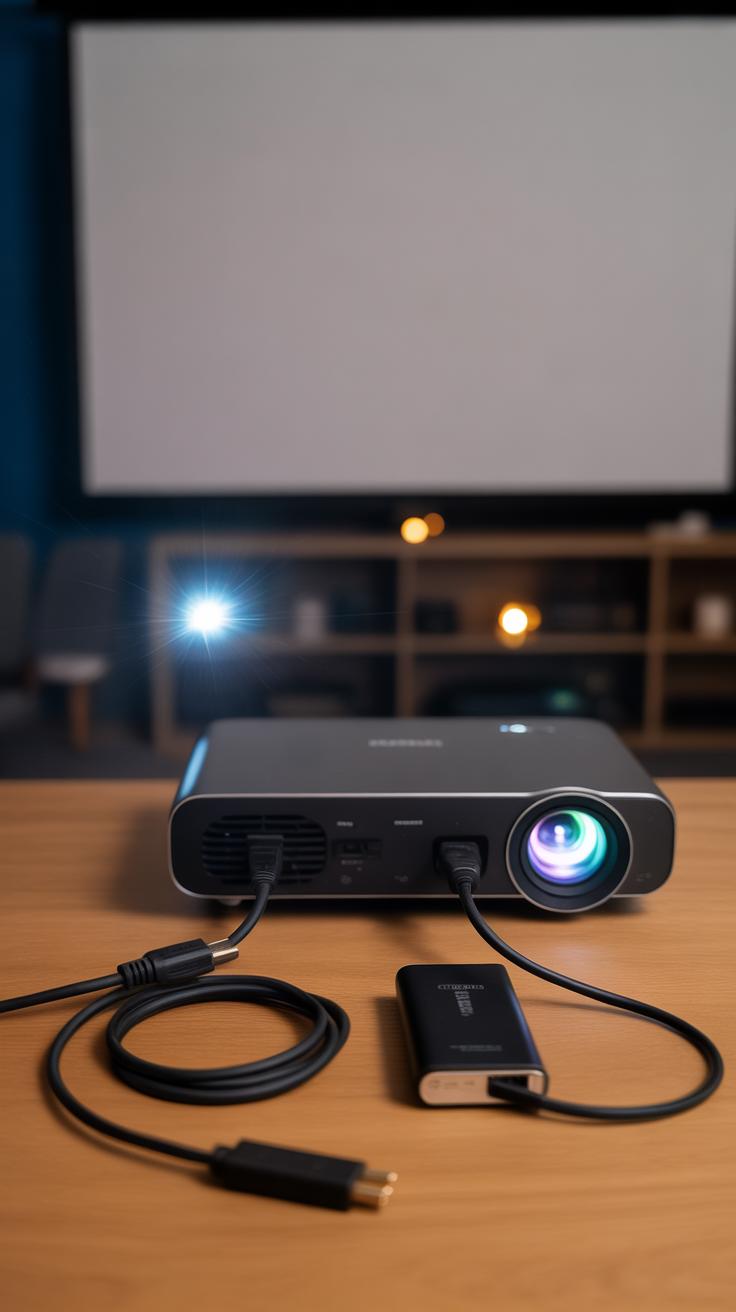
Getting your outdoor movie night off the ground means tackling the tech bit early on. You want to avoid last-minute surprises, so setting up—and testing—your equipment before guests arrive is key. Start by unpacking the projector and screen, then find a spot where the screen won’t catch glare or shadows late in the evening. Positioning matters; misaligned visuals can break the mood pretty quickly.
Testing the Projector and Screen Alignment
Once your screen is up, switch on the projector and check the focus. It might take a few tweaks to get that sharp image. Walk around the viewing area to see if the picture looks clear from different angles. The screen should be taut to avoid wrinkles messing with the image—something that’s easier said than done. Don’t forget to check the projector’s brightness; outdoor settings often need more power than indoor. False focus can happen, and you might think “it looks good enough,” but it usually means it could be better.
Checking Sound and Connectivity
Sound is just as vital as visuals. Test your speakers by playing a short clip at various volume levels. Too loud might annoy neighbors, but too soft won’t reach the crowd. Make sure all connections—HDMI cables, power cords, audio ports—are secure. Wireless setups can be convenient but prone to cutting out, so if you can, have backup cables ready. Play a few soundtracks and listen for distortions or delays, especially if your setup involves more than one speaker. I once skipped a full soundcheck and ended up scrambling to fix low volume just as the movie started—which, you don’t want.
Weather Considerations and Backup Plans
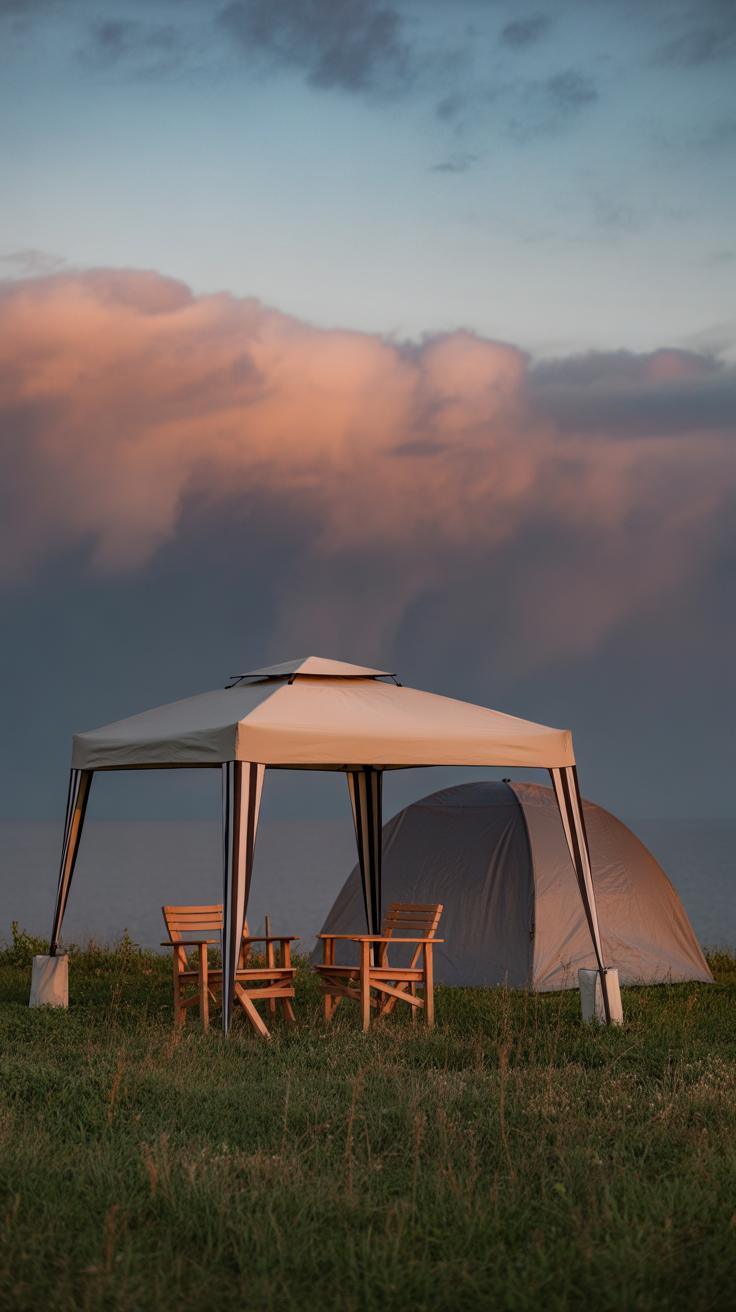
Monitoring Weather and Timing
Planning an outdoor movie night means you’re at the mercy of the weather. It’s wise to start keeping an eye on forecasts several days before your event. Sometimes, even a chance of light drizzle can dampen the mood—literally. I’ve learned the hard way that checking right up to the last possible moment can save a lot of disappointment. Try to schedule the screening later in the evening when temperatures might drop but the risk of sunshine fading is less urgent.
Don’t just glance at the general forecast. Look for specifics—humidity, wind speed, or an unexpected breeze can affect your equipment or your guests’ comfort. Sometimes, the weather apps can’t quite agree, so it helps to check a couple of sources or use a local weather radar. You might find the forecast isn’t perfect—weather often surprises us, but a little prep goes a long way.
Creating a Plan B for Bad Weather
Having a backup plan isn’t about expecting failure; it’s more about being flexible when things don’t go as planned. Do you have an indoor spot nearby? Maybe a garage, a basement, or even a living room large enough to fit your crowd? If moving indoors is an option, that’s a great fallback. Just remember to test your setup there too—different spaces affect sound and lighting.
If indoor space isn’t available, rescheduling might be your safest bet. This can be frustrating, especially if guests have made plans, but clear communication helps. Send a quick message or email the day before, maybe even on the day if weather is uncertain. People usually appreciate honesty and a heads-up rather than showing up only to find the night canceled. What’s the point of a movie night if everyone’s distracted by rain or shivering under blankets?
Think about what your guests need to know to stay flexible without stress. Maybe suggest they bring a portable chair or blanket but also mention the chance of a backup plan. That way, expectations stay realistic, and no one feels caught off guard.
Inviting Guests and Setting the Right Expectations
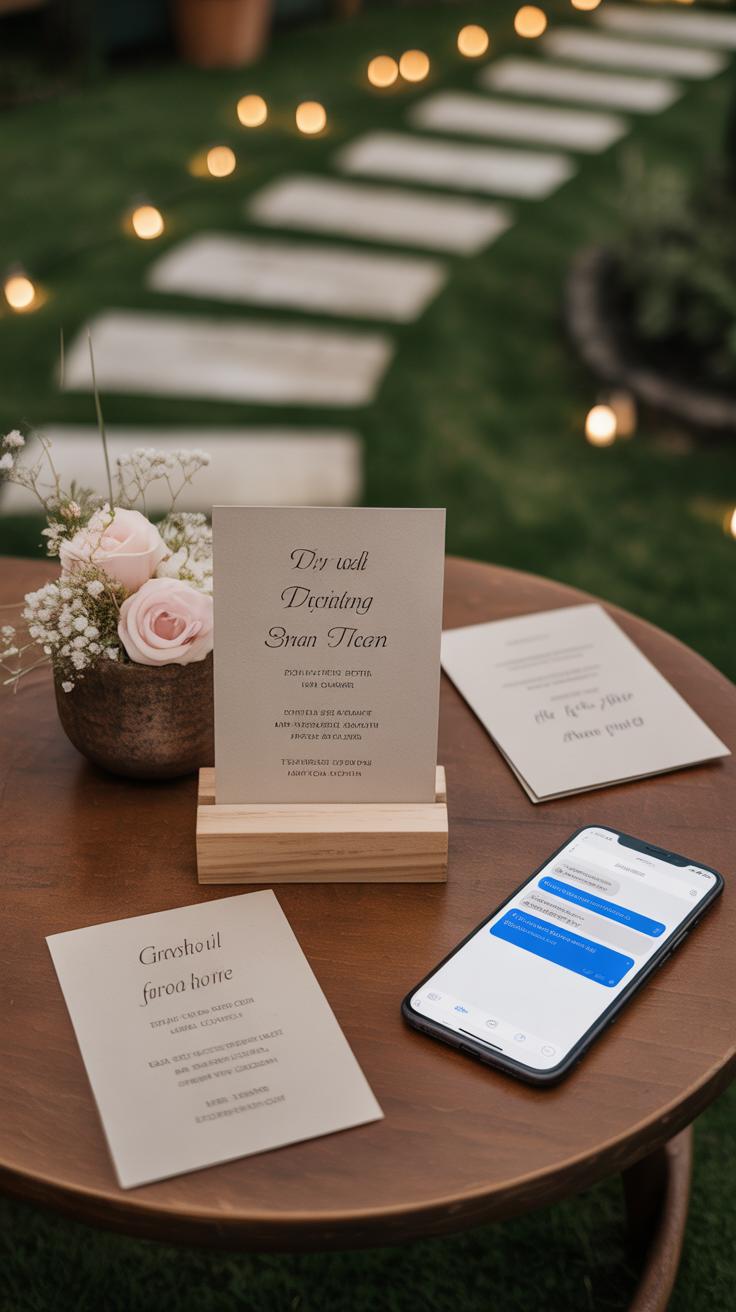
Sending Clear Invitations
When inviting friends or family to your outdoor movie night, clarity is key. Make sure your invitation includes the date and start time—this helps everyone plan accordingly. The exact location is a must, especially if your backyard isn’t the usual gathering spot; consider adding a simple map or parking tips if needed. You might want to specify when the movie will start and whether people should aim to arrive early to grab good seats or help set up.
Don’t forget to ask for RSVPs so you get a rough headcount. This usually avoids awkward moments when the snacks run out too soon—or you’ve set up more chairs than needed. Sometimes guests miss a detail here or there, so sending a brief reminder the day before can make a difference.
Preparing Guests for the Outdoor Experience
Set expectations about seating—will you provide chairs, blankets, or is it a bring-your-own-seat situation? Mentioning this upfront saves confusion and helps guests decide what to bring. Weather can be unpredictable even if you’re confident in the forecast. Suggest they dress in layers and maybe bring a light jacket or extra blanket just in case it gets chillier.
Also, you can guide guests on snacks. If you’re handling the popcorn and drinks, great. But sometimes people like to bring their favorite treats or something to share. Saying so openly encourages more variety and keeps everyone happy. I recall once when I forgot to say “bring a flashlight”—so folks were fumbling in the dark a bit. Small details like that matter more than you expect.
Enjoying Your Outdoor Movie Night and Making Memories
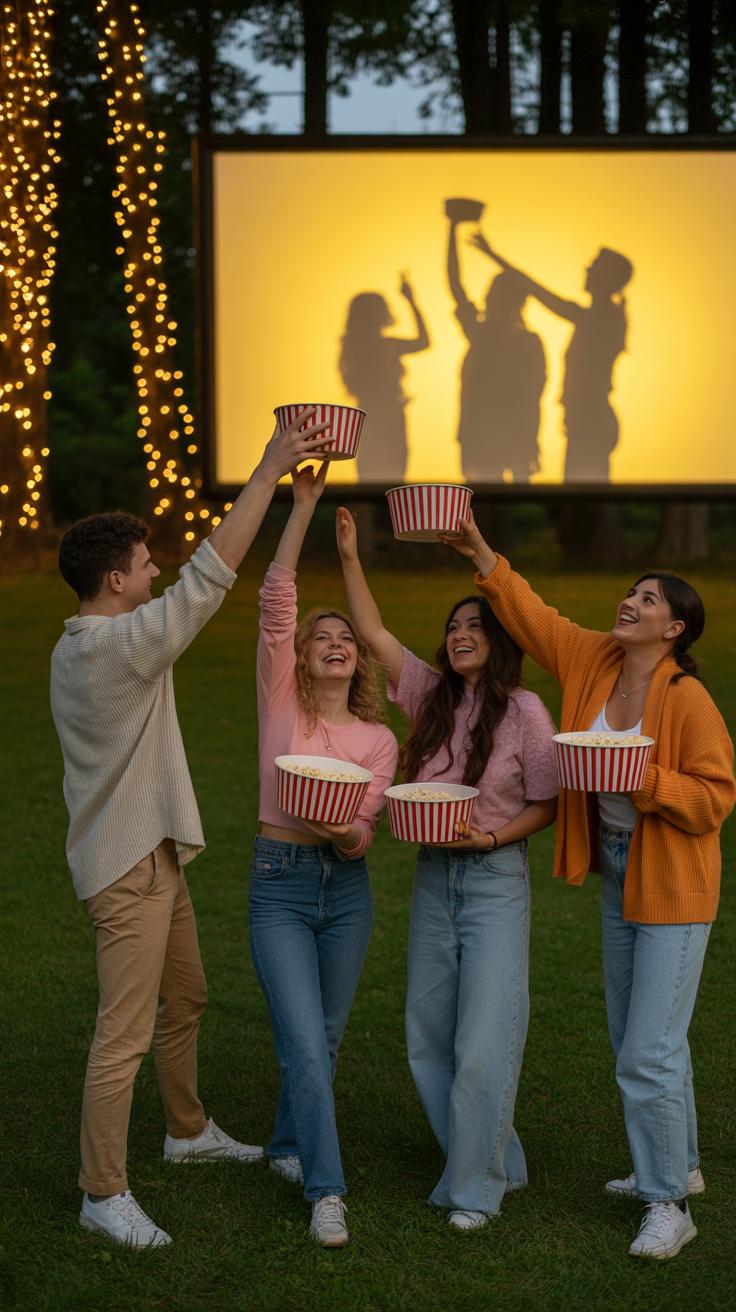
Once the movie starts rolling, try to just settle in and take it all in. It’s easy to get caught up in trying to perfect every detail, but really—this is about having a good time with your friends or family under the stars. Chat a little with the people around you before the film begins or during a funny scene. Those moments often spark some of the best memories.
Think about simple ways to keep the atmosphere light and welcoming. Maybe toss out a few casual icebreakers or share a quick story about why you chose the movie. You might notice that a little laughter sparks more relaxed conversations, and the whole group feels included. It doesn’t have to be complicated—sometimes, just sharing a snack or passing around extra blankets can make everyone feel more comfortable.
Don’t hesitate to capture a few moments on camera or your phone. A candid photo of someone laughing or a quick video of the outdoor setup can be golden for reminiscing later. Those imperfect shots often turn out the most genuine. If you’re unsure, just ask—most guests will appreciate being part of a shared memory. Afterward, consider asking for feedback—what worked, what didn’t, or even what movie they’d like next time. It’s a low-key way to keep improving, and honestly, it shows you care about making it better for everyone. Would you want a night like this repeated? Probably, right?
Conclusions
Outdoor movie nights bring friends and family together in a relaxed setting. They allow you to enjoy entertainment while enjoying fresh air and nature. Planning the right setup and considering your guests’ comfort will make your movie night a hit.
Use the tips shared here to host your own outdoor film experience. From choosing the right screen to creating a cozy atmosphere, each step adds to making your evening special. Now, you can look forward to many enjoyable nights under the stars with your favorite movies and loved ones.


